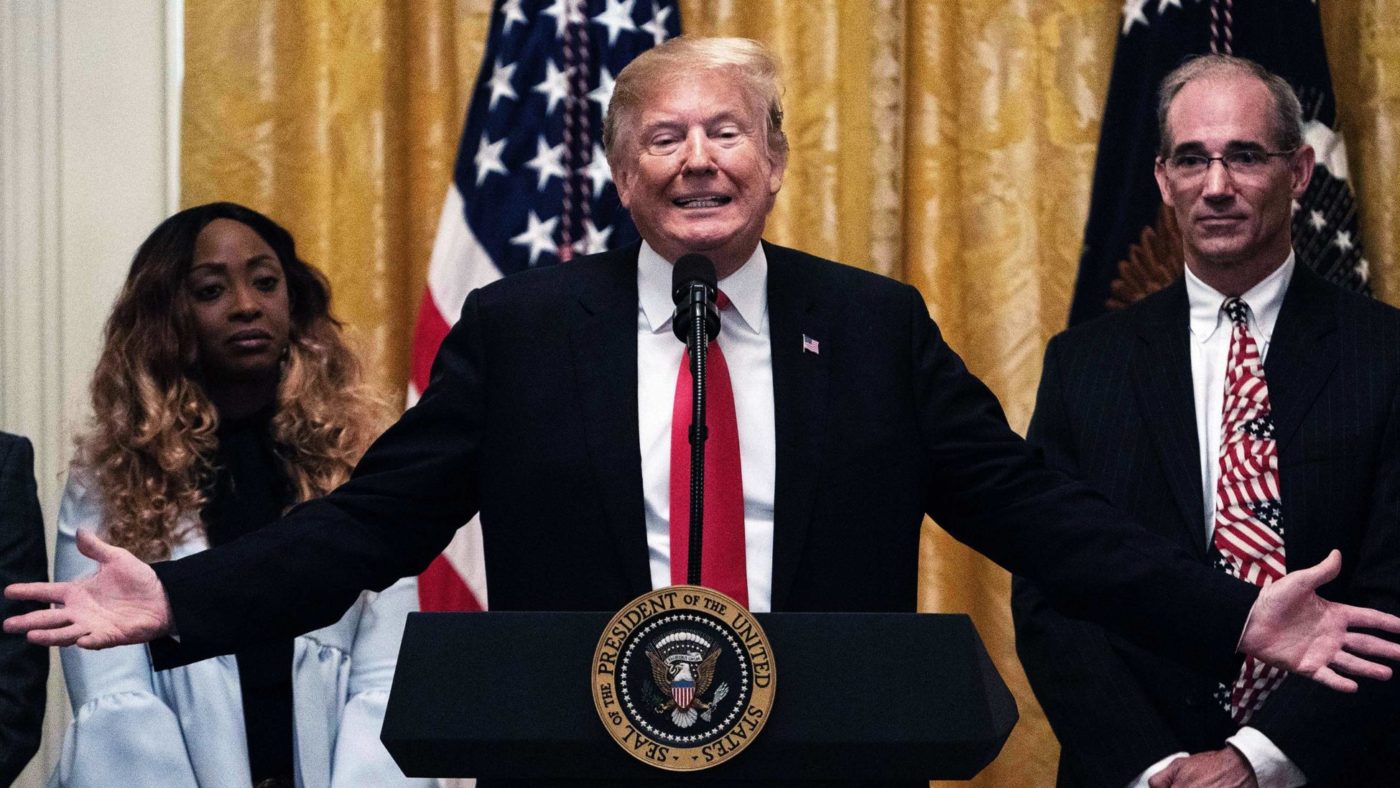They may have other differences, but all the major Democratic presidential candidates agree they want to repeal the Tax Cuts and Jobs Act (TCJA) of 2017. The GOP’s landmark tax reform made major changes to tax deductions, slashed the corporate tax rate from 35 per cent to 21 per cent, cut personal income tax rates, and doubled the child tax credit.
When the TCJA first passed, it faced 20-point net disapproval, but public opinion has become more favourable. Some Democrats claimed the changes amounted to a middle-class tax hike, calling it a “scam” that wouldn’t strengthen the economy. Yet in 2018 the economy grew by three per cent—the fastest annual growth in over a decade. Based on the limited evidence we have so far, the tax reform seems to be working.
Still, some members of President Trump’s inner circle seriously oversold the potential benefits of the package. Treasury Secretary Steve Mnuchin, economist Stephen Moore, and National Economic Council Director Larry Kudlow have all claimed that the TCJA is “paying for itself”—in other words, enough economic growth has been stimulated to prevent tax revenue from falling. This is simply not true – the budget deficit has risen, mostly due to falling tax revenue. Similarly, the president’s unrealistic promise of six per cent growth has not materialised.
At the same time, however, serious economists who backed the cuts never claimed they would pay for themselves or turbocharge growth. Instead, the economic case for the Tax Cuts and Jobs Act largely rests on the $647bn of corporation tax cuts it included. As one comprehensive study found, corporate income taxes have the largest negative impact on growth for each dollar of revenue they raise, because the supply of capital tends to be more responsive to taxation than the supply of labour.
The corporate rate cut, along with other provisions that allowed companies to deduct the full value of some investments, reduced the cost of capital—everything from equipment and machinery to patents and intellectual property. A lower cost of capital increases incentives to invest, boosting worker productivity and wage growth. Progressives often rely on the meaningless mantra of “trickle down doesn’t work”, but there’s a strong economic consensus that higher corporate taxes hit workers in the form of lower wages.
One common criticism of the Trump tax reform is that companies are using the money saved on stock buybacks instead of new investments. But data from the St. Louis Federal Reserve shows that gross private domestic investment has risen steadily since the passage of the TCJA, and investment has also grown as a share of GDP. It’s a false choice, anyway. When companies buy back stocks, they return money to shareholders and push capital away from older firms without investment opportunities to newer ones with more opportunities.
As professors Jesse Fried and Charles Wang noted in the Harvard Business Review, “there is little evidence that buybacks and dividends by the S&P 500 are hurting the economy by depriving firms of capital they would otherwise use for investment and paying workers”. Investment would have grown even more, too, were it not for tariff hikes and trade tensions.
The theory suggests an increase in investment should be leading to higher productivity and higher wages. And thankfully the data shows that wages are rising—especially for lower-wage workers. According to Goldman Sachs’ most recent report, wage growth for people below the 50th percentile in income accelerated starting at the beginning of 2018. But, as American Enterprise Institute economist Aparna Mathur noted in Bloomberg Tax, employment and wages were on a generally positive trajectory before the tax cuts, even if they escalated after the bill passed.
The economy is strong right now, and most of the indicators that would suggest that the TCJA is working as intended are there. However, the data we currently have is very noisy, and factors like an already-tight labour market help contribute to wage growth, too. Additionally, as Tax Foundation Vice President of Federal Projects Nicole Kaeding wrote on the one-year anniversary of the TCJA’s passage, it takes time, often a few years, for the lower cost of capital to bear fruit in terms of increased investment and hence productivity and wage growth.
The corporate tax cut wasn’t a “GOP Tax Scam,” and based on the information we have at this point, it looks like it’s working. Wages and investment have grown, just as reasonable supporters of the bill predicted. But we won’t know the final verdict on the impact of the TCJA for another few years at least. However, in the meantime, Democrats would be wrong to try to reverse the corporate tax cut that seems to be a successful, pro-growth policy so far.
CapX depends on the generosity of its readers. If you value what we do, please consider making a donation.


